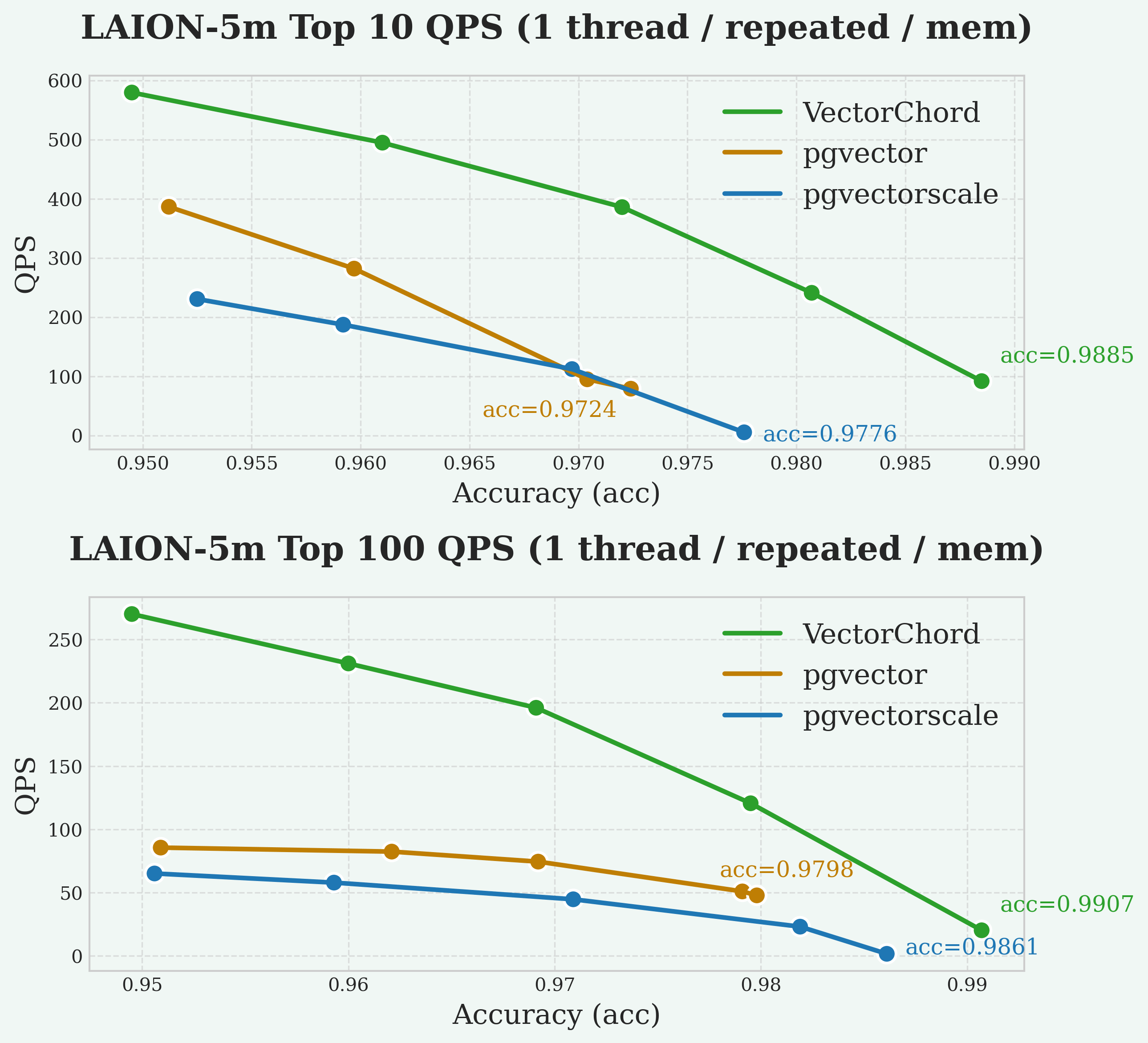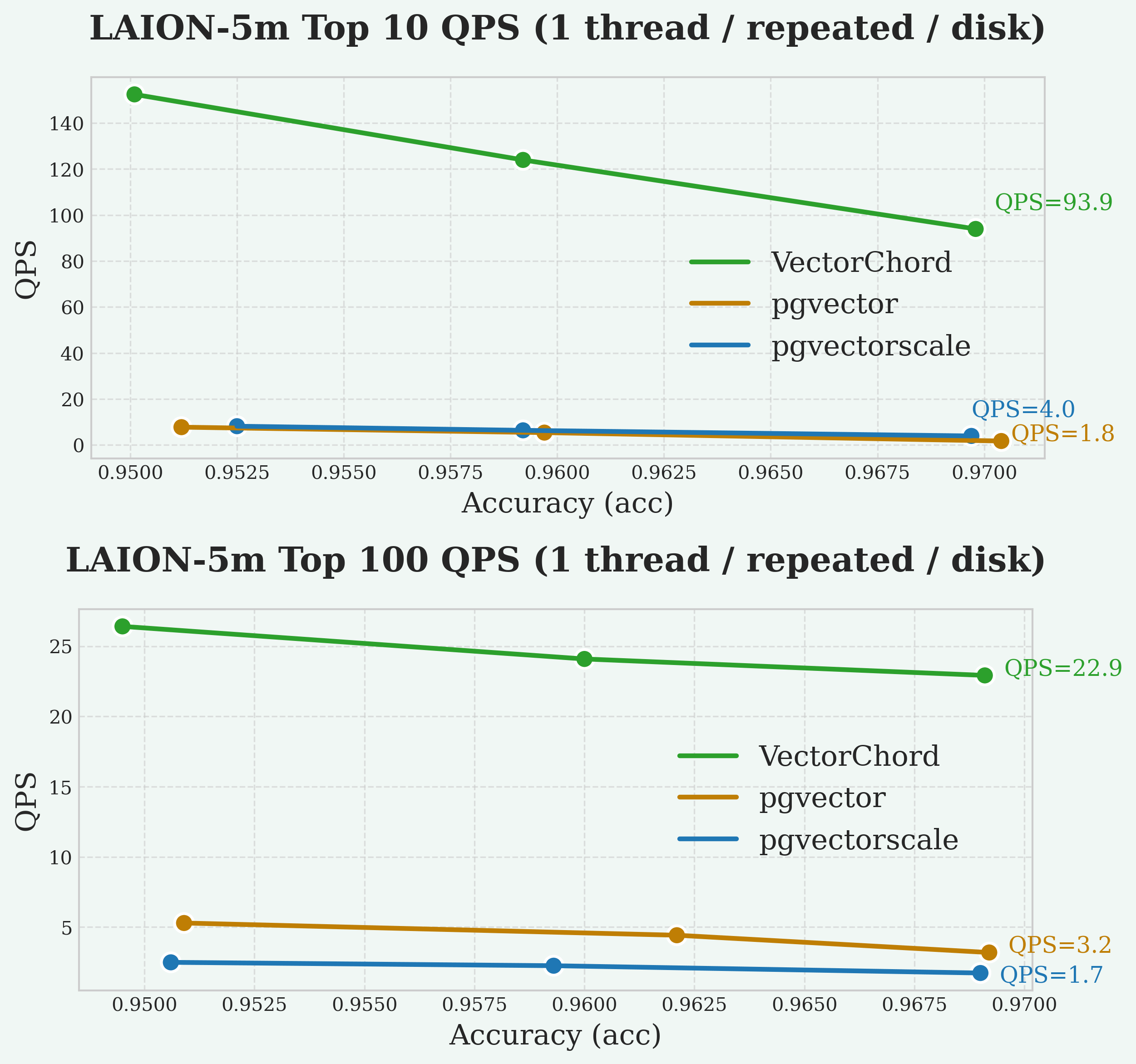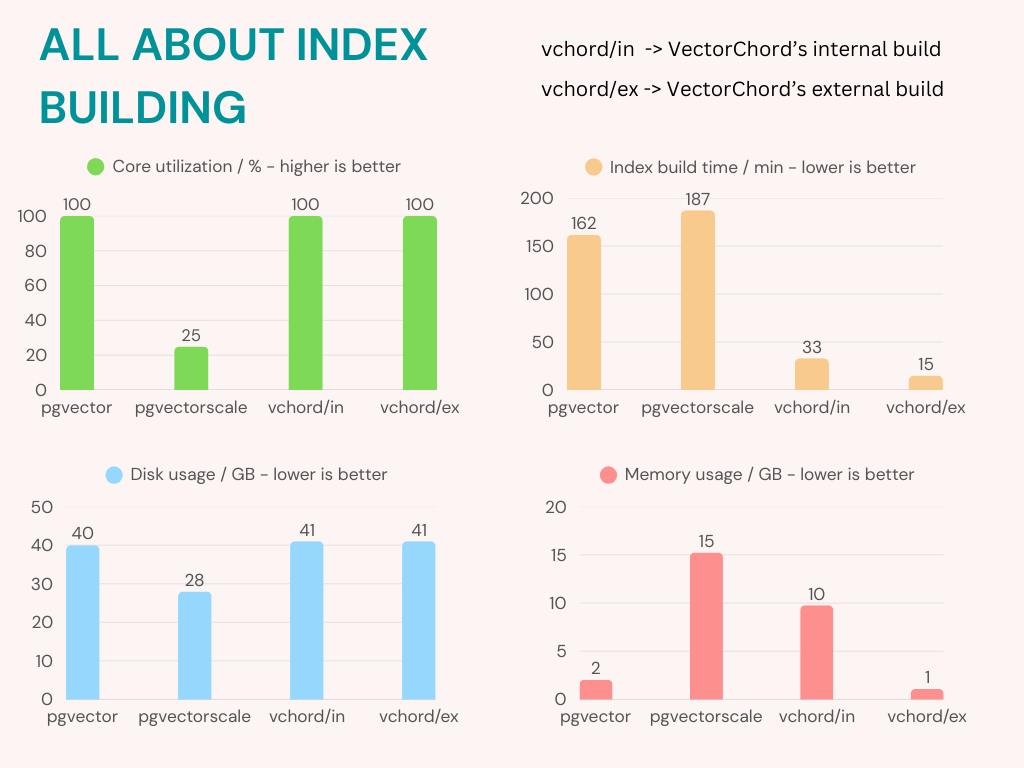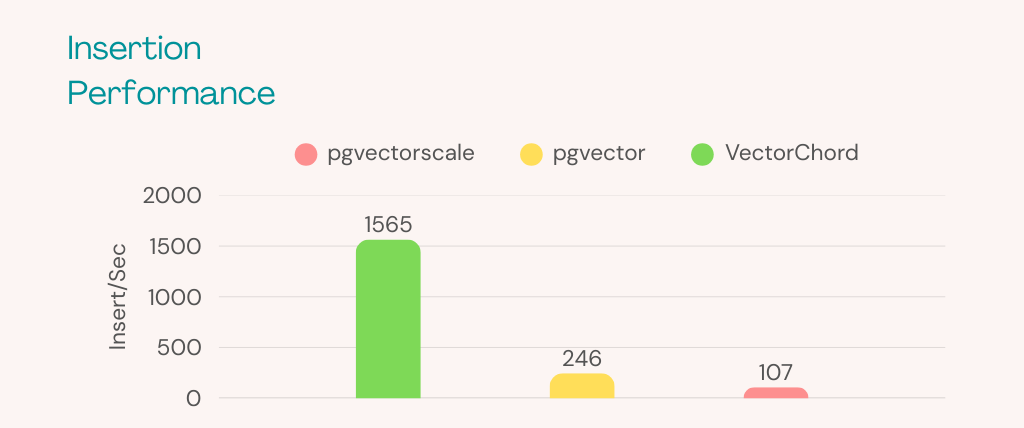Benchmark with pgvectorscale
In this section, we compare VectorChord with pgvectorscale, a PostgreSQL extension that provides vector similarity search capabilities. We will focus on four key metrics: QPS (Queries Per Second), Recall@10/100, Index Building Time, and Insertion Time. Memory and disk performance will also be discussed. If you are interested in the details of our implementation, please refer to our blog Vector Search Over PostgreSQL: A Comparative Analysis of Memory and Disk Solutions.
QPS & Recall
Memory

The graphs illustrate the trade-off between query speed (QPS) and search quality (Recall@10/100). Recall@10 measures the percentage of true nearest neighbors found within the top 10 results. In general, higher QPS can be achieved at the cost of lower recall, and vice versa. A better system may achieve higher recall at the same QPS, or higher QPS at the same recall level. Our goal is typically to maximize QPS while maintaining a high recall target (e.g., 95%).
Disk

As always, VectorChord consistently achieves higher QPS at high recall levels (e.g., >95% Recall@10) compared to the other extensions, followed by pgvector and pgvectorscale with similar QPS.
Index Building

VectorChord maximizes CPU usage, reduces memory consumption, and shortens index-building time compared to pgvectorscale.
Insertion Time

As you can see, VectorChord (1565 Insert/Sec) performs much better than pgvector (246 Insert/Sec) and pgvectorscale (107 Insert/Sec) when inserting data. For most workloads, 100 Insert/Sec is more than enough. However, if you find that a lot of vectors are continuously inserted in your production (for example, 500 Insert/Sec), this could be a problem.